Overview
The benefits of OCR software for land deeds and surveys are profound, encompassing:
- Enhanced accuracy
- Time efficiency
- Cost savings
- Scalability
- Improved compliance with legal standards
Evidence substantiates these advantages, demonstrating significant reductions in processing times and errors, alongside increased productivity. Furthermore, the capability to manage larger volumes of data is crucial for maintaining a competitive edge in the real estate sector. These factors collectively underscore the importance of adopting OCR technology.
Introduction
The landscape of land deeds and surveys is rapidly evolving, driven by the imperative for accuracy, efficiency, and compliance in real estate transactions. The advent of Optical Character Recognition (OCR) technology presents professionals in the field with a formidable ally that not only streamlines workflows but also significantly enhances the reliability of property records. As the demand for precision escalates, the question arises: how can OCR solutions effectively tackle the challenges inherent in traditional document management and safeguard the integrity of land ownership data? This article delves into the seven key benefits of OCR software for land deeds and surveys, illuminating its transformative impact on the research process and positioning firms for success in an increasingly competitive market.
Parse AI: Streamline Title Research with Advanced OCR Technology
Parse AI employs advanced Optical Character Recognition (OCR) methods to revolutionize the research process. By swiftly retrieving critical information from extensive sets of title records, Parse AI significantly enhances the productivity of title researchers. This sophisticated system minimizes the time required for , leading to a marked improvement in the accuracy and reliability of the retrieved information.
Furthermore, the OCR market is projected to grow at a compound annual growth rate (CAGR) of 17.87% for the Services segment from 2024 to 2032, highlighting the increasing dependence on OCR solutions in real estate. Companies such as Sunshine Title Solutions have already experienced a 42% reduction in processing times and a 33% decrease in error rates following the integration of an AI-driven document analysis system.
Real estate professionals acknowledge that OCR software for land deeds and surveys not only streamlines the verification of property ownership but also enhances risk management and decision-making processes. Consequently, as the industry continues to evolve, the adoption of OCR systems has become essential for maintaining a competitive edge in the fast-paced real estate market.
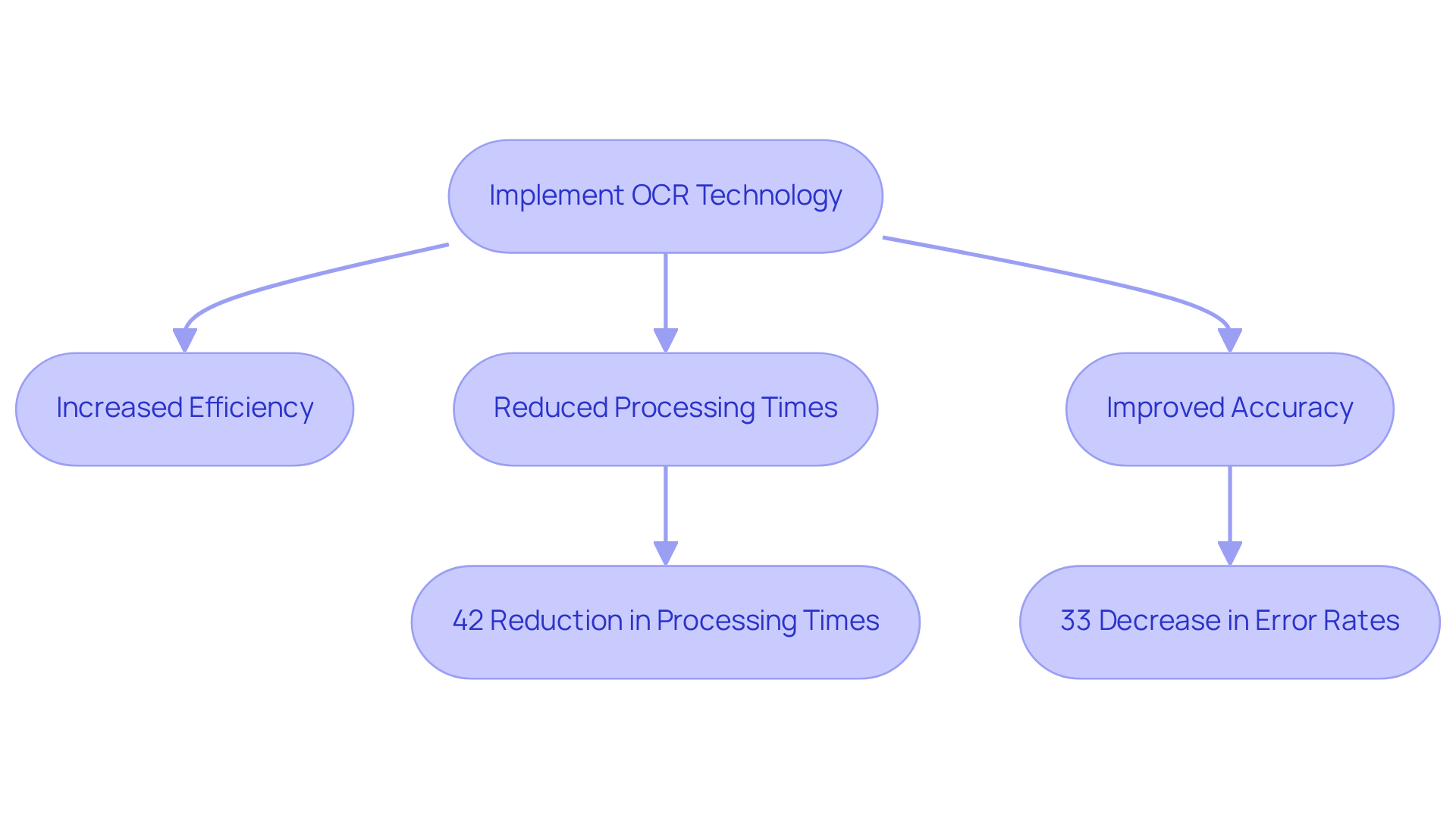
Enhanced Accuracy: Reduce Errors in Land Deeds with OCR Software
The use of plays a pivotal role in enhancing the accuracy of land deeds, significantly reducing errors associated with traditional manual data entry methods. Research indicates that approximately 70% of title researchers have observed improved accuracy in property records due to the use of OCR software for land deeds and surveys.
By automating the retrieval of information from texts, OCR software for land deeds and surveys ensures that data is not only precise but also uniform, thereby safeguarding the integrity of property ownership records. This is particularly vital in minimizing disputes that can arise from inaccuracies.
Furthermore, industry leaders emphasize that the use of OCR software for land deeds and surveys is essential for maintaining precise property records, which is crucial for effective real estate transactions and legal compliance.
As noted by Sneha Nair, 'IDP can reduce processing time by 50% or more, significantly speeding up workflows,' underscoring the effectiveness of OCR technology.
Consequently, as we approach 2025, the impact of OCR software for land deeds and surveys on the accuracy of property ownership records is expected to become even more pronounced, reinforcing its critical importance in the real estate sector.
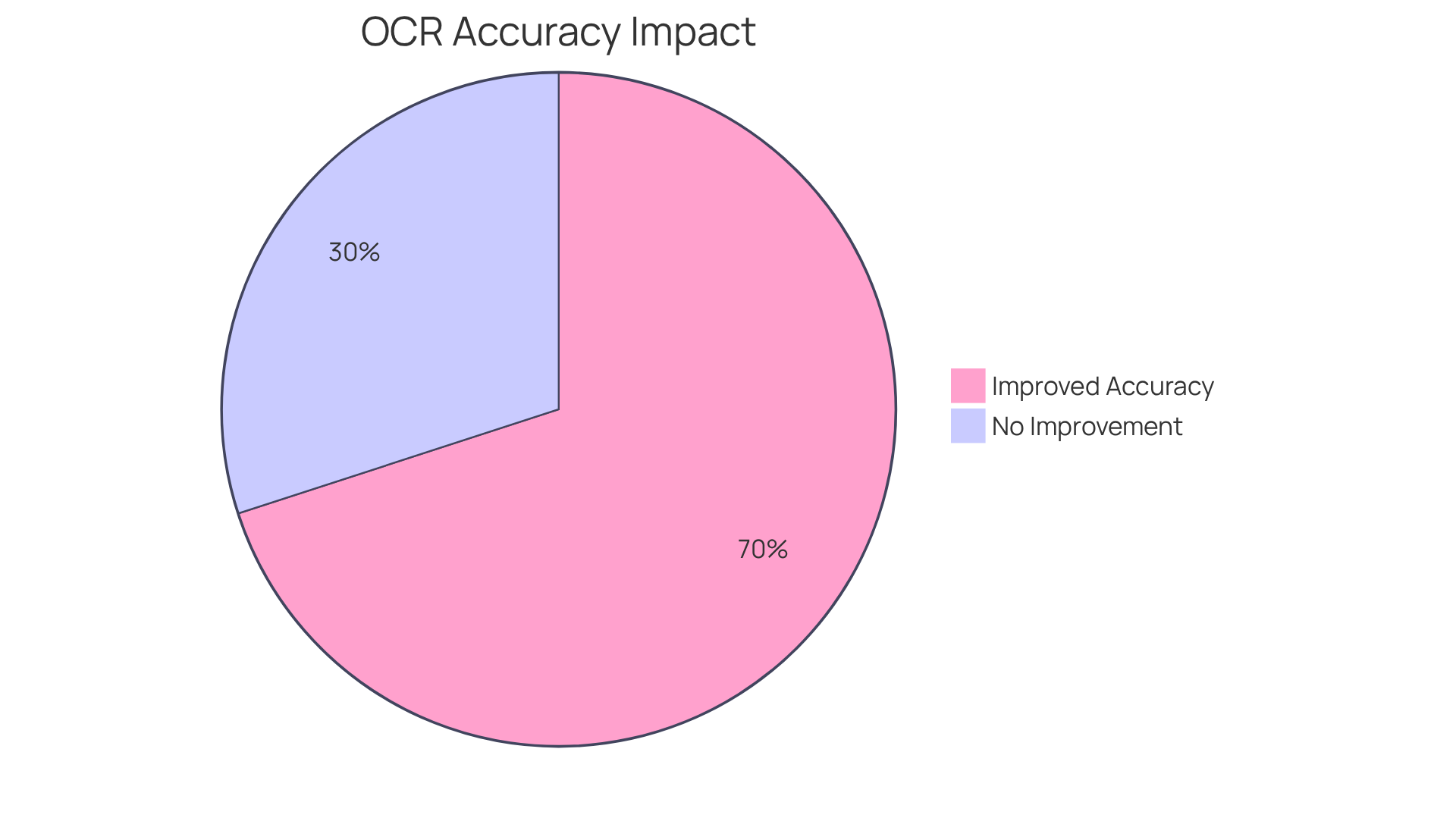
Time Efficiency: Accelerate Document Processing for Land Surveys
The use of OCR software for land deeds and surveys significantly enhances the speed of processing documents, enabling researchers to automate data extraction from various materials. This automation leads to a remarkable decrease in processing durations; organizations that have embraced OCR report an average reduction in processing times of up to 80%, as highlighted in a report by AIIM. Such efficiency allows researchers to shift their focus towards more strategic activities, including data analysis and informed decision-making.
As one researcher noted, "The incorporation of automated processing has transformed our workflow, allowing us to manage more cases with greater precision and efficiency."
Looking ahead to 2025, the time-saving advantages of OCR in document research are expected to become even more pronounced, with many professionals experiencing processing durations that are 60% faster than before OCR adoption. This transformation not only enhances productivity but also in the real estate sector, while concurrently reducing the likelihood of human errors in paperwork management.
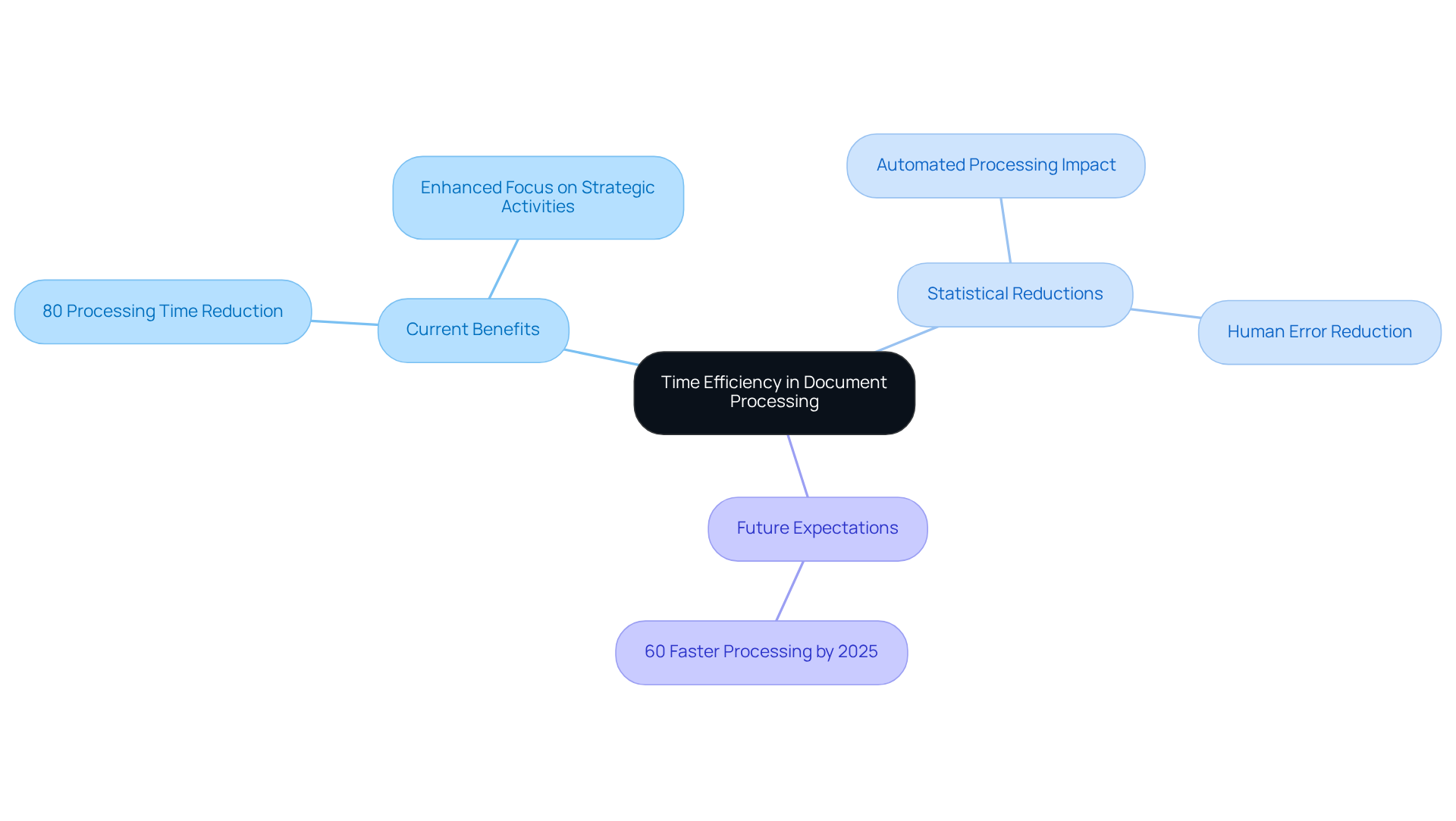
Cost Savings: Lower Operational Costs with OCR Solutions
The implementation of presents a remarkable opportunity for significant cost savings in title research operations. By drastically reducing the time dedicated to manual data entry—often constituting up to 30% of an accountant's workload—companies can substantially lower their operational costs. Contemporary OCR systems achieve accuracy levels exceeding 98%, with error rates in processing materials declining from 1-3% to below 0.1%. This reduction minimizes costly mistakes that necessitate expensive corrections. Such efficiency not only streamlines workflows but also enables firms to reallocate resources to more strategic tasks, thereby enhancing overall productivity.
For example, banks that have adopted OCR for loan processing have reported processing time reductions of 60-80%, resulting in considerable financial benefits. A 2024 McKinsey report indicates that companies employing OCR can cut invoice processing time by 20%, further underscoring its impact on operational efficiency. Moreover, organizations implementing OCR software for land deeds and surveys have experienced a 70% decrease in document processing expenses, showcasing the transformative potential of this technology within the real estate sector. Additionally, firms utilizing OCR report cost savings ranging from 10-20%, emphasizing the financial advantages inherent in this technological advancement.
As the landscape of document research evolves in 2025, the financial implications of diminished manual data entry and enhanced accuracy through OCR will be pivotal for firms aiming to sustain a competitive edge. By embracing these advancements, researchers in the field can not only bolster their operational efficiency but also significantly enhance their bottom line.
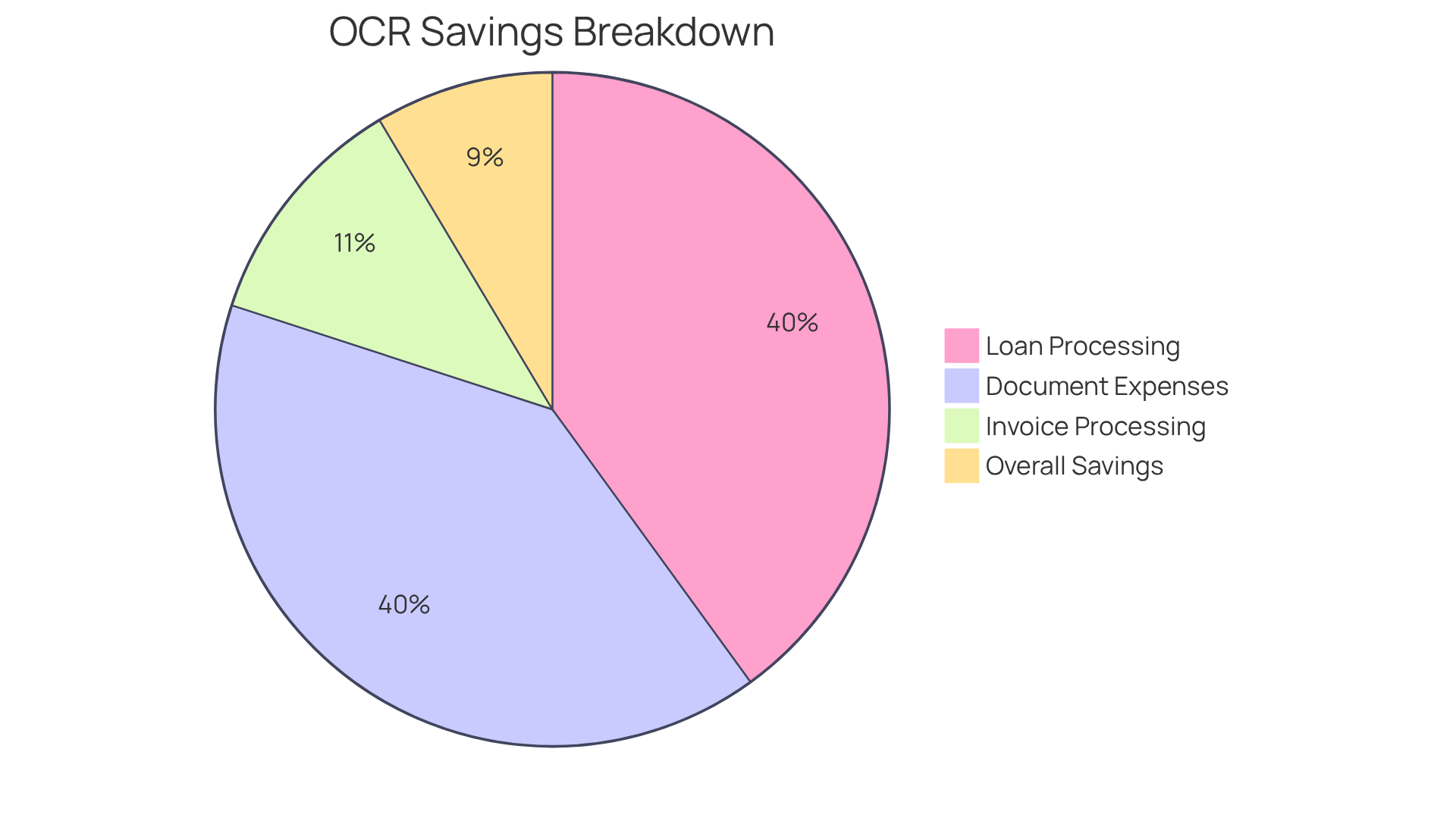
Scalability: Manage High Volumes of Land Deeds Efficiently
[OCR software for land deeds and surveys](https://parseai.co/cart) provides remarkable scalability, enabling research companies to efficiently manage substantial volumes of land deeds. As property transaction demands rise, the use of OCR software for land deeds and surveys seamlessly adapts to accommodate larger datasets, all while maintaining accuracy and speed. This guarantees that businesses can expand without being impeded by their research processes.
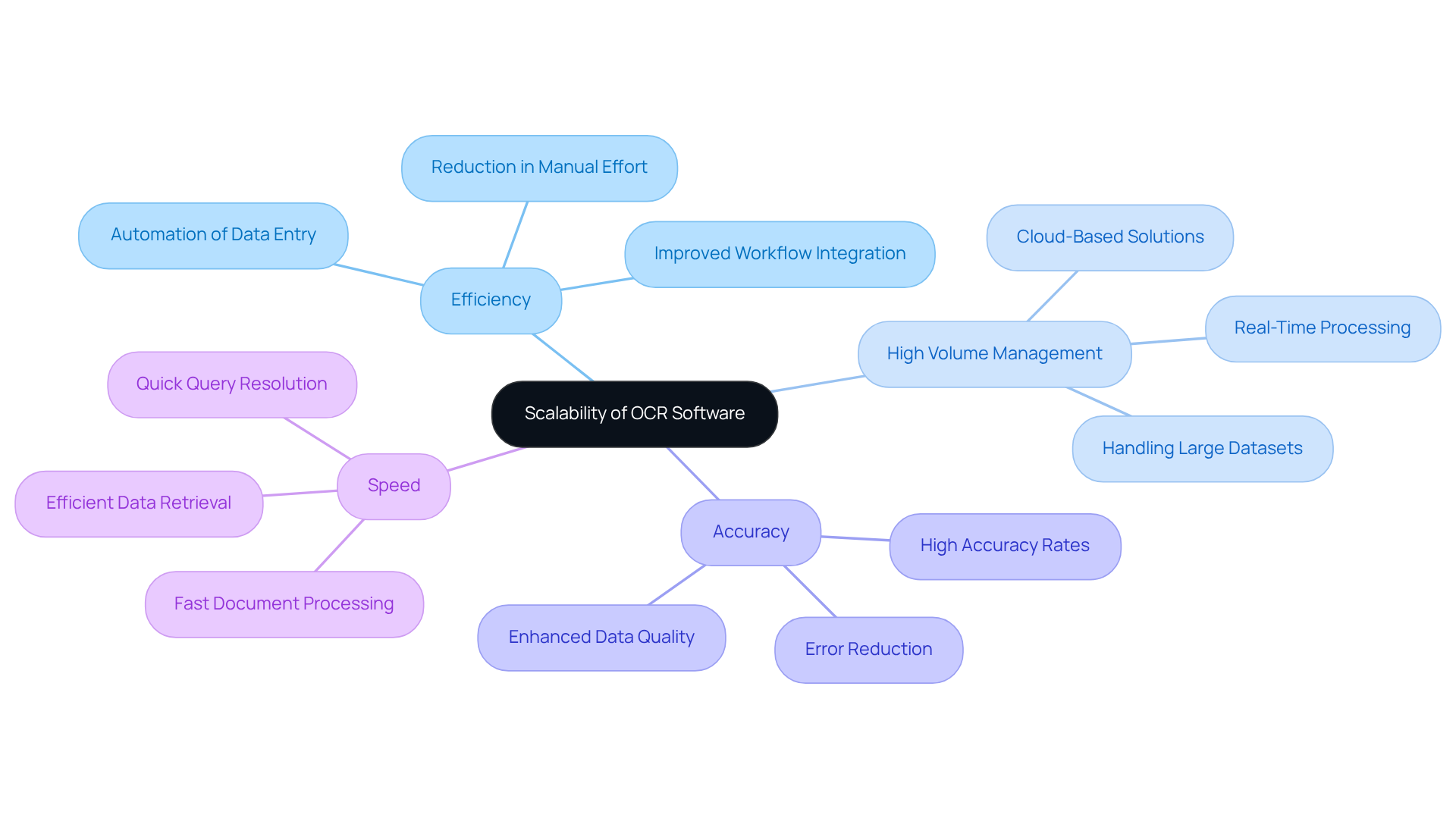
Integration: Connect OCR Software with Existing Title Research Systems
A significant advantage of OCR software lies in its ability to seamlessly integrate with existing research systems. This compatibility empowers firms to elevate their without necessitating a complete infrastructure overhaul. By connecting OCR solutions with established systems, document researchers can streamline their processes, thereby enhancing overall efficiency.
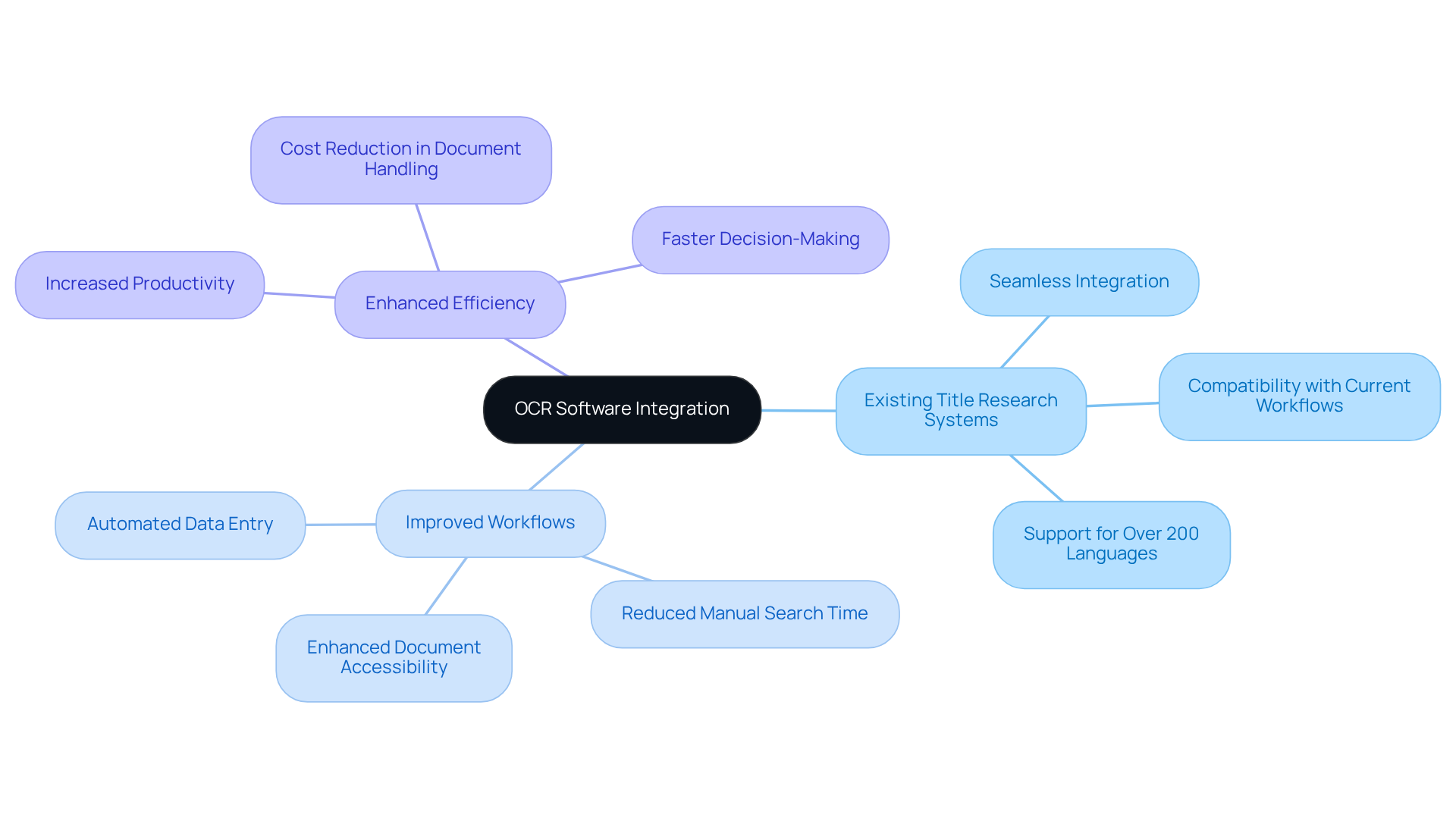
User-Friendly Interfaces: Simplify Document Management with OCR Tools
Contemporary OCR tools are designed with intuitive interfaces that significantly streamline document management for researchers. These user-centric designs facilitate easy navigation, effectively diminishing the learning curve and fostering quicker adoption of the software. As Vlad Gavriluk aptly states, "Usability is about people and how they understand and use things, not about technology." This focus on not only accelerates workflow but also enhances the research process, ultimately leading to superior outcomes in subject research.
Key Benefits of User-Friendly OCR Tools:
- Enhanced Productivity: Researchers can focus on their core tasks rather than struggling with complex software functionalities.
- Quicker Adoption: Intuitive designs allow for faster onboarding, minimizing downtime during transitions to new tools.
- Improved User Satisfaction: A clear and straightforward interface can result in higher user retention and lower support costs, as users are less likely to face frustrating obstacles.
- Focus on Clarity: As noted, "the best products don’t concentrate on features, they emphasize clarity," which is vital for efficient management of materials.
By prioritizing software that emphasizes clarity and ease of use, researchers can markedly enhance their productivity and optimize their workflows.
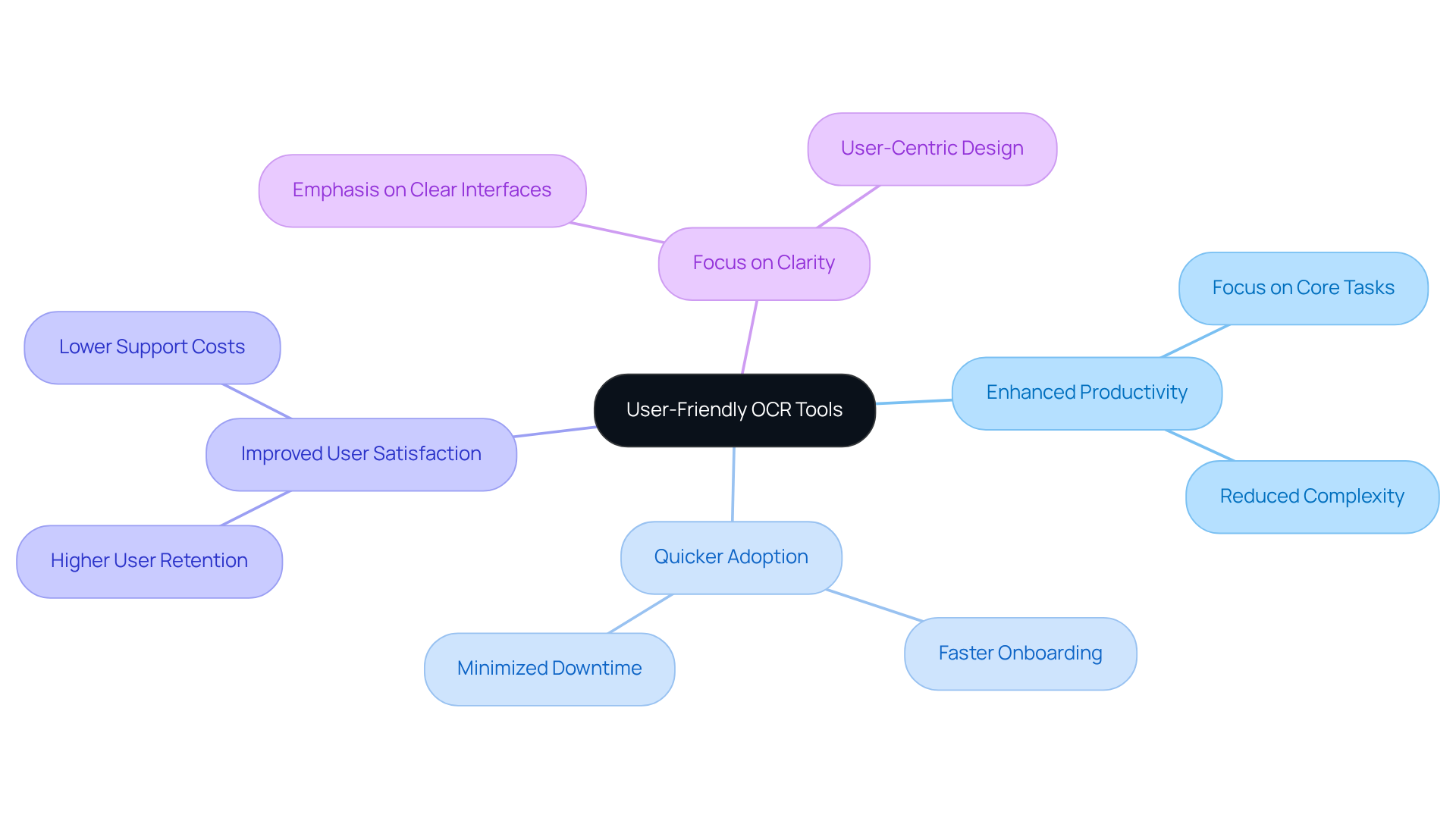
Versatility: Extract Data from Multiple Document Formats Using OCR
OCR technology demonstrates remarkable versatility, adeptly extracting data from a wide array of formats, including PDFs, images, and scanned files. This adaptability is vital for researchers, who frequently encounter in their work. In fact, over 70% of research specialists report utilizing various file formats in their daily tasks. By harnessing OCR, these professionals can effectively capture all relevant information, irrespective of its presentation format. Furthermore, OCR software for land deeds and surveys can seamlessly process advanced legal documents, ensuring that critical data is not overlooked. As we approach 2025, OCR capabilities continue to evolve, empowering researchers to handle an even broader spectrum of document types with enhanced accuracy and efficiency.
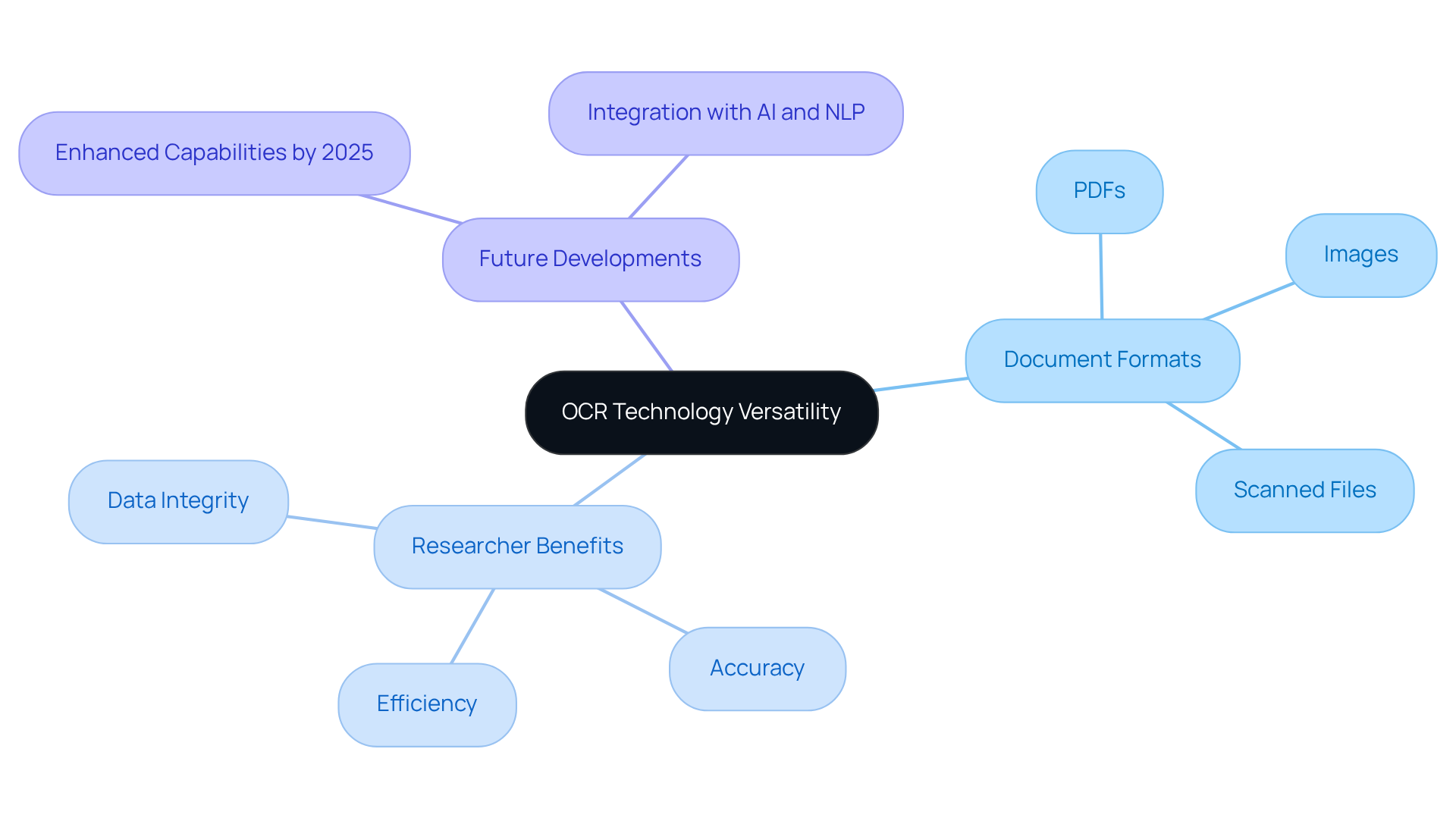
Compliance: Ensure Legal Standards in Land Deeds with OCR Technology
OCR technology plays a pivotal role in ensuring compliance with legal standards in land deeds. By precisely extracting and managing data, researchers can maintain the integrity of their records and comply with regulatory requirements. This adherence is crucial for and facilitating smooth property transactions.
For instance, OCR software for land deeds and surveys can efficiently process land deeds, ensuring that all necessary information is captured accurately—essential for maintaining the validity of property ownership claims. Legal specialists highlight that incorporating OCR in property dealings not only simplifies workflows but also improves the reliability of documentation, thereby strengthening confidence in the ownership research process.
Furthermore, as we enter 2025, the impact of OCR on legal standards compliance in document research becomes increasingly prominent, assisting organizations in navigating intricate regulatory environments while reducing risks associated with manual data management.
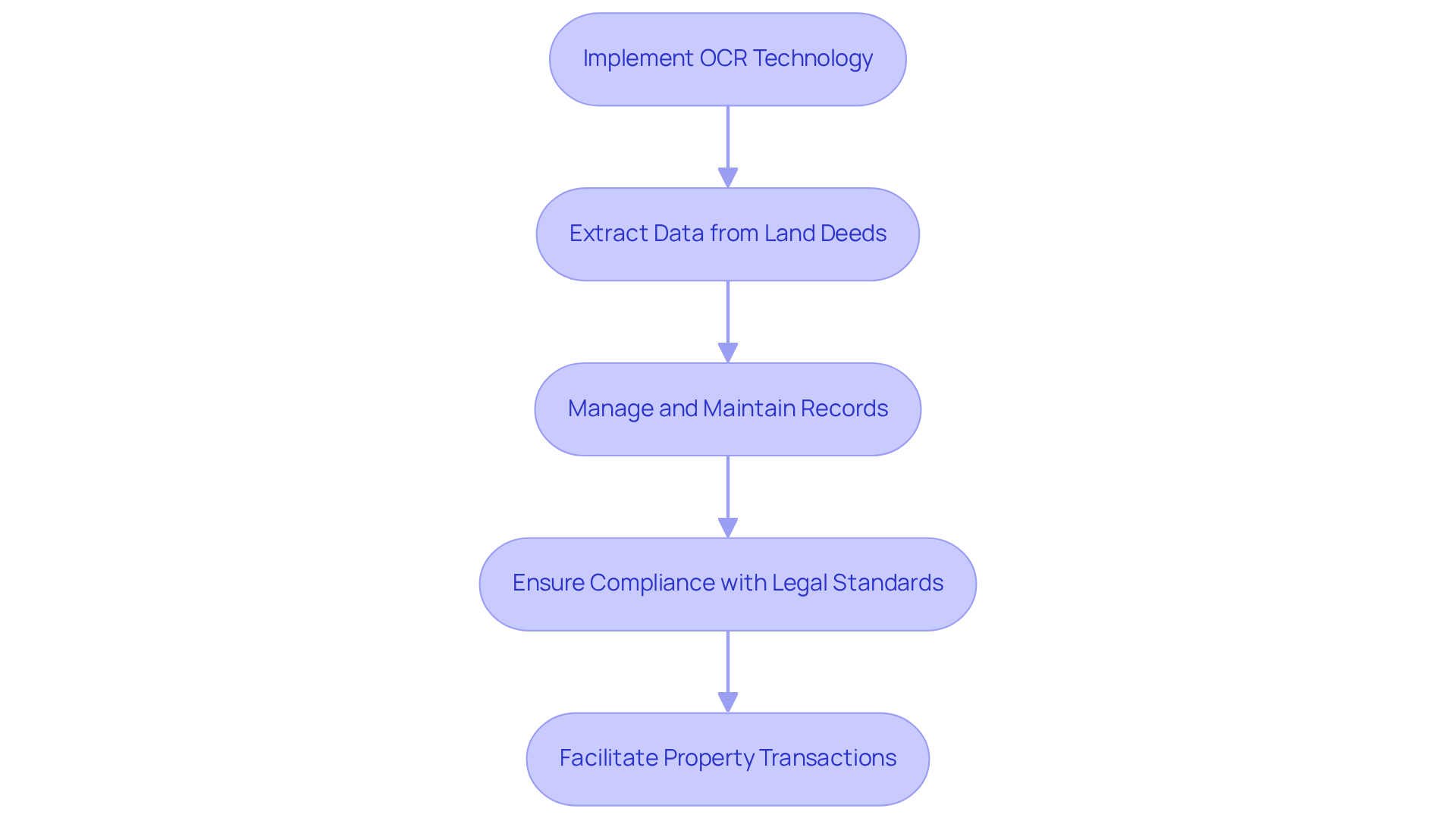
Continuous Improvement: Adapt OCR Solutions to Evolving Land Research Needs
The research landscape is in a state of constant evolution, necessitating that OCR solutions adapt to meet emerging challenges and requirements. Ongoing progress in OCR innovations enables researchers to manage these changes efficiently. The OCR market is projected to grow significantly, with a valuation expected to reach USD 51.92 billion by 2031. This growth is driven by the increasing demand for OCR software for land deeds and surveys as across various sectors, including real estate. Furthermore, the market is anticipated to grow at a CAGR of 14.8% from 2023 to 2030, emphasizing the urgency for firms to invest in adaptable OCR solutions to future-proof their operations and maintain a competitive edge.
Industry leaders assert that integrating advanced OCR capabilities, such as machine learning and data extraction automation, enhances operational efficiency and streamlines workflows. This integration allows title researchers to concentrate on critical tasks rather than manual data entry. As the demand for efficient land research continues to rise, the use of OCR software for land deeds and surveys will be crucial for success.
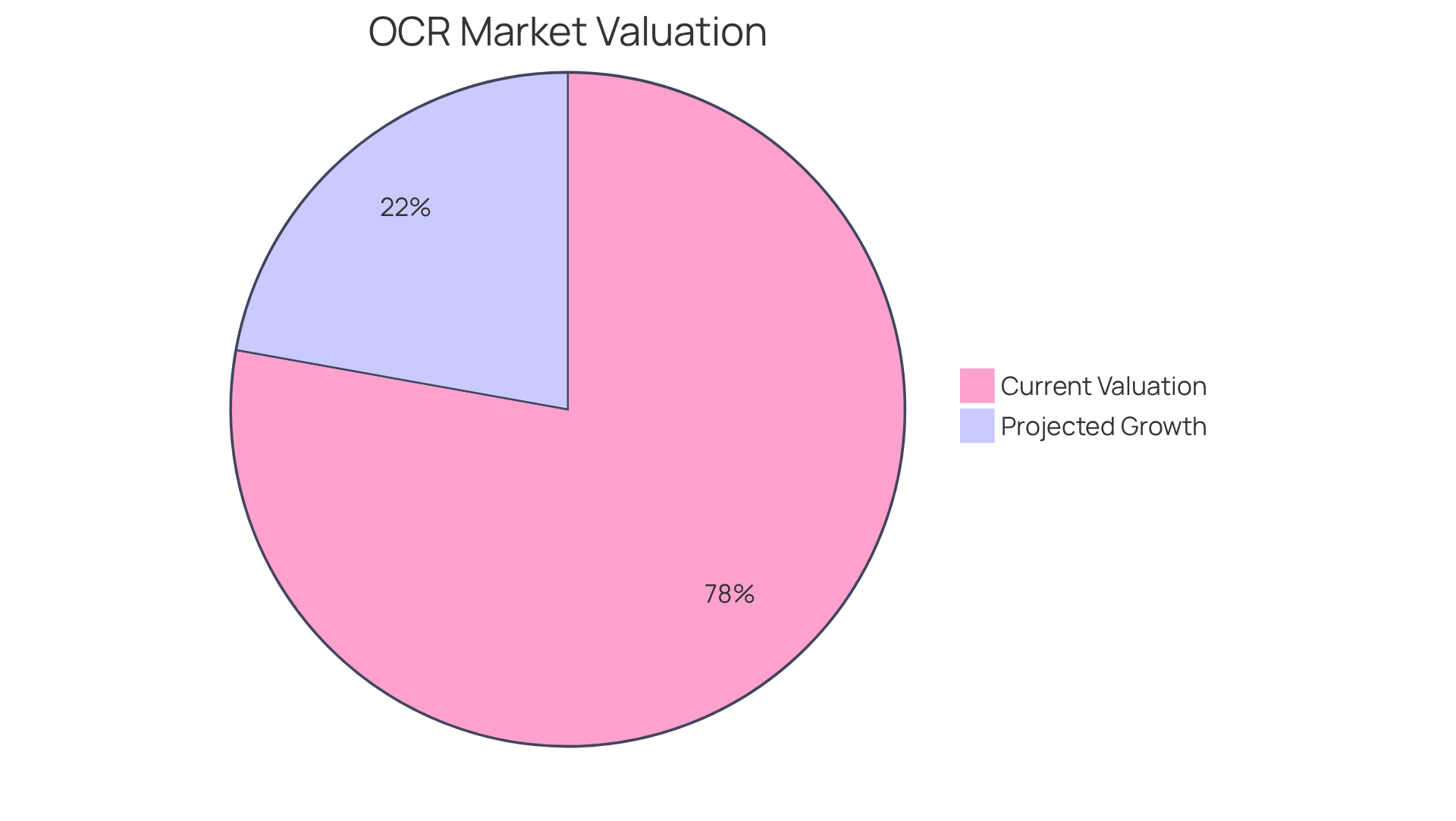
Conclusion
The integration of OCR software in land deeds and surveys signifies a transformative advancement in the real estate sector, enhancing efficiency, accuracy, and compliance. By automating data extraction and minimizing manual entry, professionals can concentrate on strategic decision-making and risk management, ultimately maintaining a competitive edge in a rapidly evolving market.
Key benefits of OCR technology are evident, including:
- Improved accuracy in property records
- Significant reductions in processing times
- Substantial cost savings
Furthermore, the scalability of OCR solutions enables firms to manage increasing volumes of documents effortlessly. User-friendly interfaces and versatile data extraction capabilities further streamline workflows. Compliance with legal standards is reinforced through precise data management, ensuring the integrity of property ownership records.
As the demand for efficient land research continues to grow, embracing OCR technology is not merely advantageous but essential for success. Organizations are urged to invest in adaptive OCR solutions to future-proof their operations and enhance overall productivity. The journey towards a more efficient and accurate land deed management system commences with the strategic implementation of OCR software, paving the way for a more streamlined and reliable real estate industry.
Frequently Asked Questions
What is Parse AI and how does it enhance title research?
Parse AI employs advanced Optical Character Recognition (OCR) technology to streamline the title research process by swiftly retrieving critical information from extensive title records, significantly enhancing the productivity of title researchers.
How does OCR technology improve the accuracy of land deeds?
OCR software for land deeds and surveys enhances accuracy by automating data retrieval, which reduces errors associated with traditional manual data entry methods. Approximately 70% of title researchers report improved accuracy in property records due to OCR use.
What are the benefits of using OCR software for land deeds and surveys?
The benefits include improved accuracy of property records, minimized disputes from inaccuracies, and the ability to maintain precise property ownership records, which are essential for effective real estate transactions and legal compliance.
What impact does OCR technology have on document processing times?
OCR technology can reduce processing times by up to 80%, allowing researchers to focus on more strategic activities such as data analysis and informed decision-making.
How has the adoption of OCR technology affected companies in the real estate sector?
Companies that have integrated AI-driven document analysis systems, like Sunshine Title Solutions, have reported a 42% reduction in processing times and a 33% decrease in error rates.
What is the projected growth of the OCR market?
The OCR market is projected to grow at a compound annual growth rate (CAGR) of 17.87% for the Services segment from 2024 to 2032, indicating an increasing reliance on OCR solutions in real estate.
What future trends are expected regarding the use of OCR technology in real estate?
As we approach 2025, the impact of OCR software for land deeds and surveys on the accuracy of property ownership records is expected to become even more pronounced, reinforcing its critical importance in the real estate sector.




